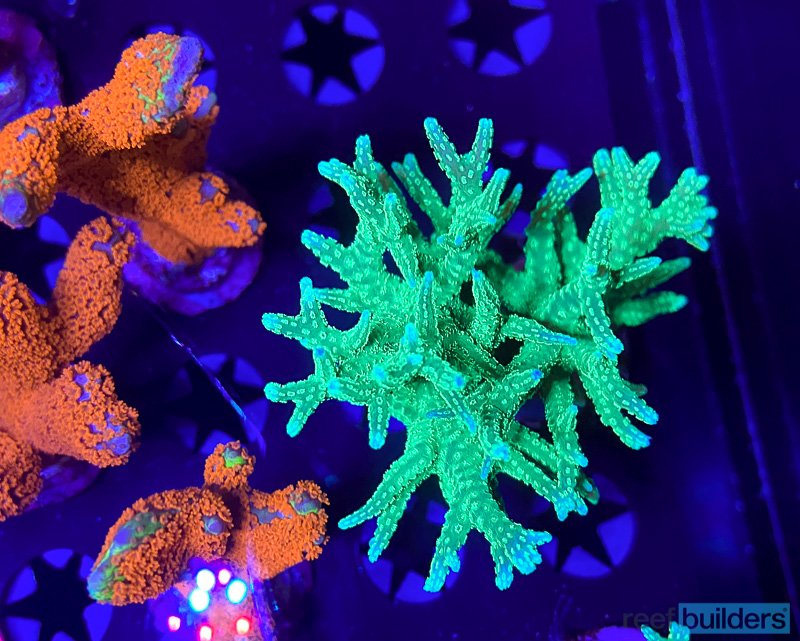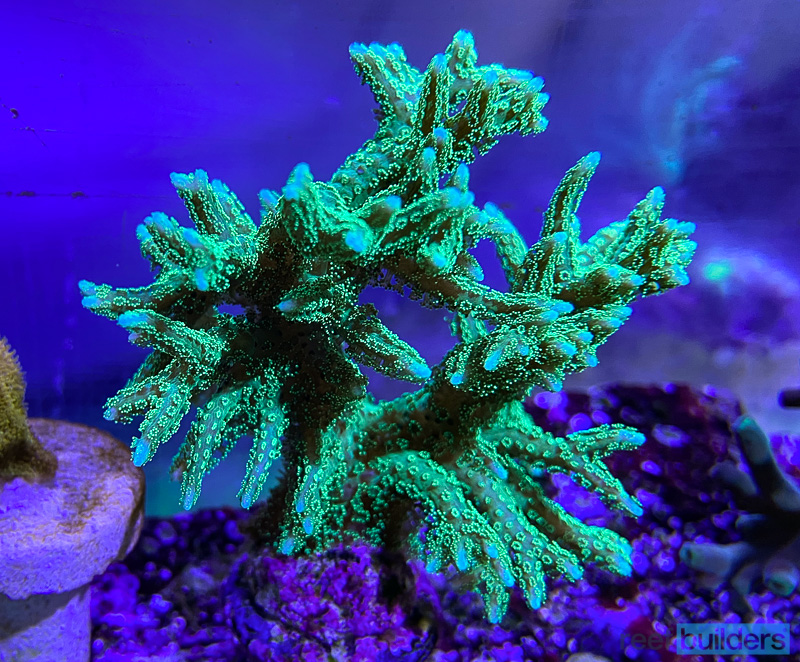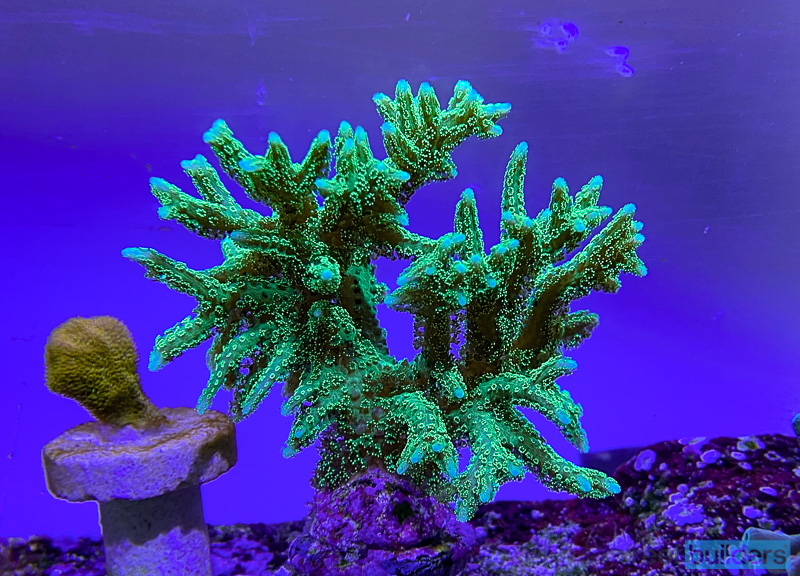The unique arrangement of Seriatopora corallites is one of the first things we ever learned about corals so we’ve developed an eye for unique and unusual bird nest corals. New strains of Seriatopora are quite rare and the last real ‘innovation’ in this group of Pocilloporids is the amazing story we had the pleasure of sharing about the captive bred hybrid Lazy’s Blue Zing bird nest coral.
Thankfully we had our eyes on while walking the halls fo Aquashella Orlando a few weeks ago because we spotted an unusual bird nest coral in the Reefworks Coral booth that we’d never seen before. The overall green coloration almost camouflaged this Seriatopora as just another green S. hystrix but something about the way the polyps shimmered made us lean in for more than a few double takes.

Unlike the lime green of other S. hystrix strains or forest green of S. caliendrum strains this bizarre bird nest strain is something of a ‘tropical’ green with brighter almost metallic polyps and very sharp tips. We can’t put our tentacle on it but something about the shape of the Reefworks Coral shimmering birdnest somewhat reminds us of the uber classic Phonape bird nest with its sharp tips, tight branching pattern and slightly bumpy branch surface.
The other strain that the Reefwork Shimmer-nest reminds us of is the very rare Seriatopora dendritica we spotted a few years back from just a couple of Australian example colonies. The Reefwork Shimmer-nest doesn’t actually resemble the nice pics of dendritica we got from Gallery Aquatica but this species is so poorly known that we just don’t have enough experience with which to compare it.
We can’t help but wonder whether the Reefwork Shimmer-nest could be the result of accidental hybridization between a Phonape and some other species/strain in a similar scenario as the Lazy Blue Zing. Regardless of the provenance, we’ve never seen wild Seriatopora colonies look like the unique coral we spied in Florida a few weeks back and thankfully we brought a piece back to the studio for grow out and long term observation so we’ll keep researching and see how this coral develops under a wide range of reefing conditions.




